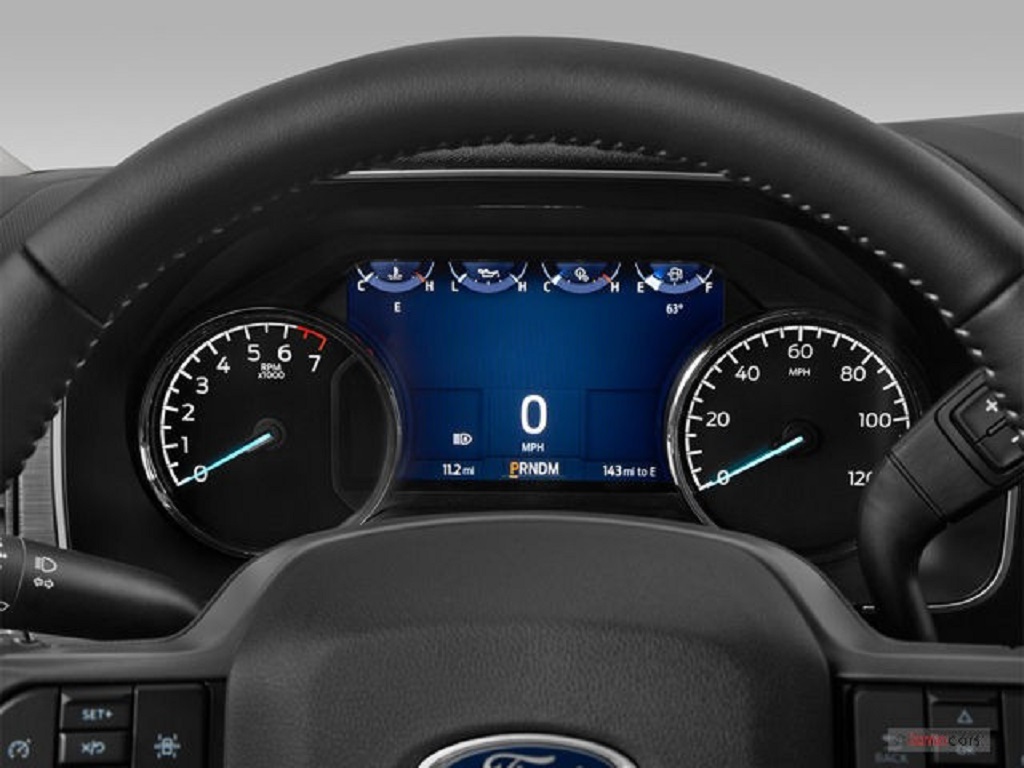Accurate speedometer readings are essential for ensuring a smooth and safe driving experience. If you’re experiencing erratic speedometer readings on a Ford F-150, it’s more than a minor inconvenience—it can lead to incorrect mileage calculations and potentially dangerous situations on the road. Thankfully, with the right insights, tools, and expertise, you can identify and resolve these issues efficiently.
For further insight into maintaining your vehicle, explore Vehicletradeus for a comprehensive guide on car care.
Understanding the Causes of Erratic Speedometer Readings
Before delving into solutions, it’s essential to pinpoint the root causes behind the erratic readings on your Ford F-150’s speedometer.
Faulty Vehicle Speed Sensor (VSS)
The VSS is one of the most common culprits behind erratic speedometer readings. This sensor measures the rotation speed of the vehicle’s wheels and transmits the data to the speedometer. A malfunctioning VSS can lead to intermittent or wildly inaccurate speed readings.
Damaged Wiring or Connectors
Wiring issues, such as loose connections or corroded wires, can disrupt the signal between the speed sensor and the speedometer. This often leads to inconsistent or incorrect readings. Regular inspection of the wiring system is crucial to prevent such issues.
For more insights, click on https://vehicletradeus.com/vehicle-maintenance/toss-car-floor-mats-in-the-washing-machine/
Defective Instrument Cluster
The instrument cluster, which houses the speedometer, can fail due to wear and tear over time. Faulty components within the cluster may cause the needle to jump unpredictably or display inaccurate speeds.
Outdated or Corrupted Software
Modern Ford F-150s rely on computer systems to interpret and display speedometer data. Outdated or corrupted software can create glitches, resulting in erratic behavior.
Diagnosing the Problem
Diagnosing the issue is a critical first step in resolving erratic speedometer readings. Here’s a systematic approach:
Step 1: Check for Error Codes
Use an OBD-II scanner to retrieve diagnostic trouble codes (DTCs). These codes can help identify issues with the speed sensor, wiring, or other components linked to the speedometer.
Step 2: Inspect the Vehicle Speed Sensor
Locate the VSS on your Ford F-150—usually found on the transmission or rear axle. Examine it for physical damage, debris, or corrosion that might impair its function.
Step 3: Examine Wiring Connections
Trace the wiring from the VSS to the speedometer and inspect for frays, breaks, or loose connectors. Repair or replace damaged sections as needed.
Step 4: Test the Instrument Cluster
A malfunctioning instrument cluster may require specialized tools for testing. In some cases, professional recalibration or replacement might be necessary.
Effective Solutions for Fixing the Issue
Once the diagnosis is complete, apply the following solutions to restore accurate speedometer performance.
Replace the Vehicle Speed Sensor
If the VSS is damaged or faulty, replacing it is often the most straightforward fix. OEM sensors are recommended for optimal compatibility and performance.
Repair or Replace Wiring
Repair damaged wires using heat-shrink tubing or replace them entirely to ensure a reliable connection. Proper insulation will protect against future corrosion or wear.
Recalibrate the Instrument Cluster
Professional recalibration might be required if the issue lies within the instrument cluster. This can be done at a Ford dealership or a trusted auto repair shop.
Update Vehicle Software
Ensure your Ford F-150’s software is up-to-date. Many dealerships offer updates to resolve glitches that may affect the speedometer’s accuracy.
Preventing Future Speedometer Issues
To avoid recurring problems, implement these preventive measures:
Regular Maintenance Checks
Schedule routine inspections for your vehicle’s electrical system, sensors, and software. Preventive care can catch potential issues before they escalate.
Drive Cautiously
Avoid rough driving conditions that can damage the speed sensor or wiring. Off-road enthusiasts should inspect their vehicles more frequently.
Keep Software Updated
Stay informed about software updates from Ford to address potential bugs that might affect speedometer readings.
When to Seek Professional Help
If you’ve tried the above solutions and your Ford F-150’s speedometer continues to act up, it’s time to consult a professional mechanic. Complex issues, such as a deeply embedded software glitch or a failing instrument cluster, require expert attention.
FAQs
Why is my Ford F-150 speedometer reading incorrectly?
Common causes include a faulty speed sensor, wiring issues, or instrument cluster malfunctions.
Can I drive with a malfunctioning speedometer?
It’s unsafe and illegal in some areas. A malfunctioning speedometer can also lead to inaccurate mileage readings.
How much does it cost to fix a speedometer issue?
Repair costs range from $100 to $500, depending on the issue and labor rates.
Is resetting the vehicle’s computer necessary?
Sometimes, resetting the ECU can resolve software glitches affecting the speedometer.
How often should I inspect the speed sensor?
Include speed sensor checks during routine maintenance, ideally every 12,000–15,000 miles.
What tools are needed for a DIY repair?
Essential tools include an OBD-II scanner, multimeter, and basic hand tools for sensor or wiring inspections.
Conclusion
Fixing erratic speedometer readings on a Ford F-150 doesn’t have to be daunting. By understanding the potential causes, diagnosing the problem systematically, and applying targeted solutions, you can restore your truck’s performance and safety. Regular maintenance and timely repairs ensure that your speedometer remains reliable for years to come.





